GLP-1 Titration Remains Persistent Challenge Among Patients With Obesity
Researchers explored the real-world dose titration, adherence rates, and effectiveness of glucagon-like peptide-1 medications among patients in a multidisciplinary obesity clinic.
Achieving target doses and optimal titration of glucagon-like peptide-1 (GLP-1) receptor agonists remains a challenge among patients with obesity and the pharmacists that manage their medications, according to a study published in Diabetes, Obesity, and Metabolism.1
While persistence of treatment in the clinic reached optimal levels, further investigation is needed to evaluate the real-world effectiveness of GLP-1s as well as the common titration and adherence approaches that accompany the use of these medications.
“Given that over 40% of the US population is affected by obesity, these findings have driven the rapid adoption of these therapies, which now constitute a substantial proportion of national prescriptions,” wrote authors of the study.1 “However, the extent to which these outcomes translate to real-world settings remains unclear. Successful intervention necessitates gradual titration to maximally tolerated doses—a process often challenging to implement at scale within overburdened primary care systems.”
READ MORE:
With the first FDA approval for weight-loss in 2014,2 millions of patients—whether approved to receive them or not—have flocked toward using GLP-1 medications to improve obesity outcomes. However, with the rapid rise in GLP-1 use for weight-loss and overall reputation of these medications, providers and patients alike have encountered a myriad of challenges and concerns.
While the challenges that often accompany GLP-1s are industry-wide impacting several stakeholders within health care, the key barriers to GLP-1s and managing patients’ outcomes were highlighted in a study published in Obesity. Despite authors of the study highlighting the significant weight-loss outcomes that can benefit patients on GLP-1s, they identified multiple challenges in the use of these medications. Those challenges, which are still notable today, included gastrointestinal side effects, risk of nutrient inadequacies, loss of muscle and bone mass, high costs, frequent discontinuation, and weight regain.3
However, to maximize provider and pharmacist understanding of the best approaches to GLP-1 and obesity management, researchers of the current study focused in on current challenges existing in titration and dosing for GLP-1 medications.1
“By examining dose-titration trajectories, treatment persistence, and weight change patterns in a large cohort exclusively prescribed semaglutide or tirzepatide for obesity, we provide a detailed assessment of real-world utilization patterns and their correlation with clinical effectiveness, distinguished by the inclusion of obesity-specific indications, robust clinical records data, and integration of both Electronic Health Records and claims data,” continued the authors. “Our findings aim to investigate the differences between real-world and clinical trial outcomes, specifically timeliness and frequency of successful drug, discontinuation rates, and impacts on weight.”
Researchers conducted a retrospective cohort of patients in an obesity clinic from January 2022 to December 2024. Study participants were aged 18 to 75 years old and were enrolled in a no-cost weight-loss program where each patient received at least one prescription fill of the GLP-1 semaglutide or tirzepatide.
Throughout participants’ time in the clinic and associated weight-loss program, researchers investigated GLP-1 therapy persistence as the study’s primary outcome. Persistence of GLP-1s was defined as continuous prescription fills without a gap of more than 3 prescribing periods, or 28 days. Their secondary outcome was adherence to GLP-1 titration methods and percentage of change in body weight.
A total of 2306 patients (median age, 46 years; 85% women; 68% White) were included in the analysis. Of these participants, the median GLP-1 persistence rate was 10.7 months, meaning most patients did not miss prescription fills of more than 28 days for over 75% of the calendar year. Researchers also discovered that as persistence increased, so did weight loss. Among patients persistent for at least 6 months, their median weight loss was 9.4%, but for those whose persistence was 12 months or more, median weight loss was 14.4%.
“This study examined prescribing patterns, persistence and weight outcomes among patients initiating these GLP-1s within a specialized medical weight management program with consistent insurance coverage of semaglutide and tirzepatide,” wrote the authors.1 “We observed longer medication persistence compared with previous real-world reports, although difficulties in achieving optimal dose titration persisted. Notably, the weight loss observed in our cohort approached levels reported in clinical trials, potentially reflecting the impact of management within a dedicated obesity medicine setting with structured support and prolonged persistent usage.”
Among the collection of outcomes researchers explored in their study, they observed significantly successful results regarding GLP-1 persistence and efficacy. However, they noted that optimal dose titration was a continuous challenge underscored by previous evidence.
Future studies will explore further methods for improving titration as well as the other outcomes explored in the study. Furthermore, with weight-loss success in this study possibly being owed to the obesity clinic setting, future investigation into health care settings best for weight-loss and GLP-1 management may be necessary.
“Difficulties in optimal dose titration persist even in specialized settings and warrant further investigation,” concluded the authors.1 “Future research should explore strategies to overcome titration barriers and confirm these findings in broader patient populations and health care settings, especially as medication supply issues resolve and newer agents become available.”
READ MORE:
Don’t get left behind: Sign up today for our
References
1. Samuels JM, Ye F, Irlmeier R, et al. Real‐world titration, persistence & weight loss of semaglutide and tirzepatide in an academic obesity clinic. Diabetes Obes Metab. August 5, 2025. https://doi.org/10.1111/dom.70004
2. Viercinski R, Snively D. Glucagon-like peptide-1 receptor agonists: a pharmacy perspective on insurance coverage and medication access. Harvard Medical School Center for Primary Care. March 26, 2025. Accessed August 25, 2025. https://info.primarycare.hms.harvard.edu/perspectives/articles/glp-1-pharmacy-perspective
3. Mozaffarian D, Agarwal M, Aggarwal M, et al. Nutritional priorities to support GLP-1 therapy for obesity: a joint advisory from the American College of Lifestyle Medicine, the American Society for Nutrition, the Obesity Medicine Association, and The Obesity Society. Obesity. 2025;33(8):1475-1503. https://doi.org/10.1002/oby.24336
Newsletter
Pharmacy practice is always changing. Stay ahead of the curve with the Drug Topics newsletter and get the latest drug information, industry trends, and patient care tips.






































































































































